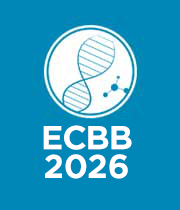Title: Optimum magnetic navigation of nanoparticles inside the human carotid
Abstract:
Chemotherapy is used against tumors cells, where drug is injected into the body from arteries and results in general systemic distribution through blood that may result in toxic side-effects as the drug attacks both healthy and cancer cells. Researchers in the late 70s have proposed navigation of drug-loaded magnetic particles through arteries towards the tumors by using external magnetic fields in order to reduce the side effects of chemotherapy. Since the healthy tissue is spared, the side effects of this method are minimized, while at the same time the therapeutic efficiency is enhanced through the increased quantity of drug that may reach the area of interest in the human body. The magnetic navigation of particles depends on the material from which the particles are made, as well as the magnitude of the magnetic field. In addition, a large number of parameters can be found that influence the performance of the magnetic navigation of particles in the desired areas. Although driving magnetic nanoparticles is critical for the drug delivery method, so far there is a lack of methodologies that have been developed and achieve it for each type of flow so quickly that it can be used in practice. For this reason, optimization algorithms can be used to control the magnetic field along with the computational models of particle motion in blood flows in tumour cells. A numerical model for optimum magnetic navigation of nanoparticles in five feature flow velocity points that occurs in cardiac cycle inside a carotid artery is used in this study. The present method combines Computational Fluid Dynamics (CFD) as well as Discrete Element Method (DEM) techniques. In addition, the optimum gradient magnetic field each time is evaluated by using the Covariance Matrix Adaptation (CMA) evolution strategy. Under the influence of five feature blood flow velocities in cardiac cycle the computational model evaluates the effect of different values of the gradient magnetic field in a way to minimize the distance of the nanoparticles from a desired trajectory. Results indicate that as the blood flow is decreased, the particles are moving closer to the desired trajectory. On the other hand, higher values of the gradient magnetic field are needed as the blood flow is increased. The imposed gradient magnetic values are strongly connected with the position of the nanoparticles and the blood flow velocity.
This work was supported by Greece and the European Union (European Social Fund- ESF) through the Operational programme < Development, Education and Lifelong Learning>> in the context of the project Reinforcement of Postdoctoral Researchers - 2nd Cycle (MIS-5033021), implemented by the State Scholarships Foundation (IKY)



